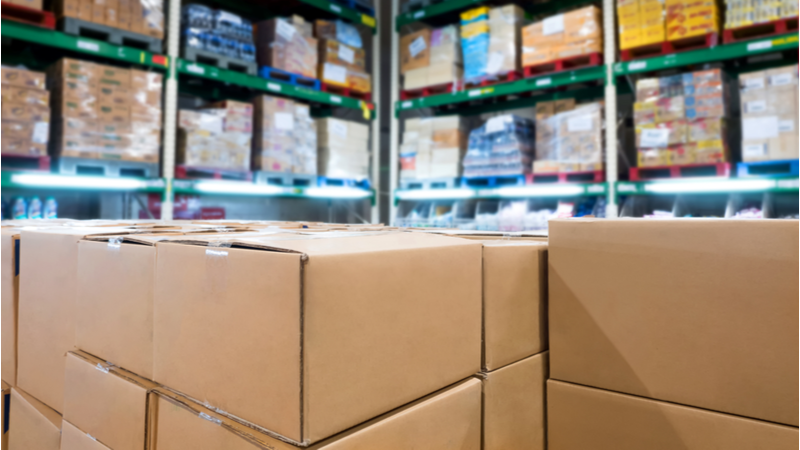Australia’s China supply chain ‘vulnerability’ – much ado about nothing?
May 19 2021

Note: This article appeared in Asia & the Pacific Policy Society’s blog, Policy Forum, on May 19 2021.
Australia’s fears around trade dependence on China have tended to stem from the possibility – and now a reality for some sectors – that the country might close the door to exports. Yet the overall economic impact of recent trade disruptions has proven limited.
But COVID-19 and rising geopolitical tensions have also thrown imports and supply chains into the mix.
Last year, national security commentators were quickest out of the gate in drawing attention to perceived vulnerabilities.
On 28 February 2020, Michael Shoebridge of the Australian Strategic Policy Institute (ASPI) claimed that the pandemic had revealed 'growing risks from overconcentration of global production in China', and accordingly, 'a reordering of global supply-chains is necessary'.
On 3 March, Rory Medcalf, Head of The Australian National University National Security College asserted that 'companies are desperately reconsidering supply chains. Diversification is now necessity, not just strategic aspiration. Suddenly the logic of many belts and many roads is plain.'
They were soon joined by others. On 3 April, Nev Power, chair of the National COVID-19 Coordination Commission, remarked 'if you think of any manufactured good…predominantly it comes from China or almost entirely from the Asian region” and that this made Australia vulnerable to “single point failures in our supply chain'.
Overseas think-tanks also chimed in. In May 2020, the London-based Henry Jackson Society released a report alleging that amongst Five Eyes countries, Australia was most exposed to China by having a 'strategic dependency' in 595 categories of imports, 28 per cent of which it said were used in critical industries.
The report, titled Breaking the China Supply Chain, advocated various forms of economic decoupling from China to mitigate the risk. Member of Parliament Andrew Hastie, a prominent Australian government critic of Beijing, wrote an accompanying essay in which he argued the present situation 'makes us vulnerable to not only economic coercion, but also supply chain warfare'.
On 1 October, Prime Minister Scott Morrison was sufficiently moved to announce a $107 million Supply Chain Resilience Initiative, contending that 'it is only sensible that Australia consider … more options to guard against supply chain vulnerability for critical necessities and to secure us against future shocks'.
To get a more authoritative handle on the challenge, on 19 February 2021 Treasurer Josh Frydenberg tasked the Productivity Commission to 'undertake a study into Australia’s resilience to global supply chain disruptions'. In an apparently coordinated flurry of activity, on 24 February President Joe Biden ordered a similar review in the United States.
The Commission’s interim report has now been published and while its key findings are striking, they have mostly been ignored by major media outlets and the national security commentariat. This could be because they defuse some of the more dramatic and alarmist takes.
The Commission begins with the assessment that Australia’s supply chains proved generally resilient throughout the pandemic, and elaborates that a primary issue for meeting Australian needs during the pandemic was in fact not broken international supply chains but rather panic-buying.
The Commission’s analysis found that only five per cent of Australian imports could be considered vulnerable, with China supplying two thirds of this number. This included a number of goods “unlikely to be essential” such as decorations and toys. It then reported that just 130 imports – fewer than half of all vulnerable imports – were used by essential industries, and that these only constituted a small fraction of all inputs into those industries. There were some supply chains identified as being potentially problematic, and these included those for some basic chemicals and personal protective equipment.
The Commission caveated their findings in appropriately cautious fashion by recommending their data-driven conclusions be stress-tested by specialised expertise, owing to trade data not being infinitely disaggregated and that there wasn’t perfect alignment between their trade and production data.
What is obvious from its work, however, is that the frequently touted logic of decoupling Australian supply chains from China to boost resilience is weaker than the common narrative suggests.
The Commission points out that diversification of supply chains is but one in a suite of strategies that can enhance supply chain resilience. This could mean a ‘China plus one’ strategy, rather than a ‘China-exit’ strategy might be most desirable.
It also stresses the basics of effective risk management. It notes that risks are best managed by actors with direct incentives to mitigate them, and typically this means firms, not government.
While firms may not always manage supply chains perfectly, governments make mistakes too and unnecessary or poorly designed intervention can crowd out investment in risk management, lumping taxpayers with a burden that could be filled by the market.
The types of intervention that can be sensibly justified are potentially modest. For example, there is a case for providing information to firms about risks such as geopolitical and security threats which the government has advance knowledge of.
As strategic competition between the United States and China becomes the new normal, and Australia’s own bilateral relationship with China remains ruptured, there are understandable fears that it might target supply chains as well as exports to disrupt the local economy.
But public policy that serves the national interest must always be evidence-based and supplied by experts and the Commission’s recent report is an example of just that. The government must take it on board.
Professor James Laurenceson is Director of the Australia-China Relations Institute at the University of Technology Sydney.

